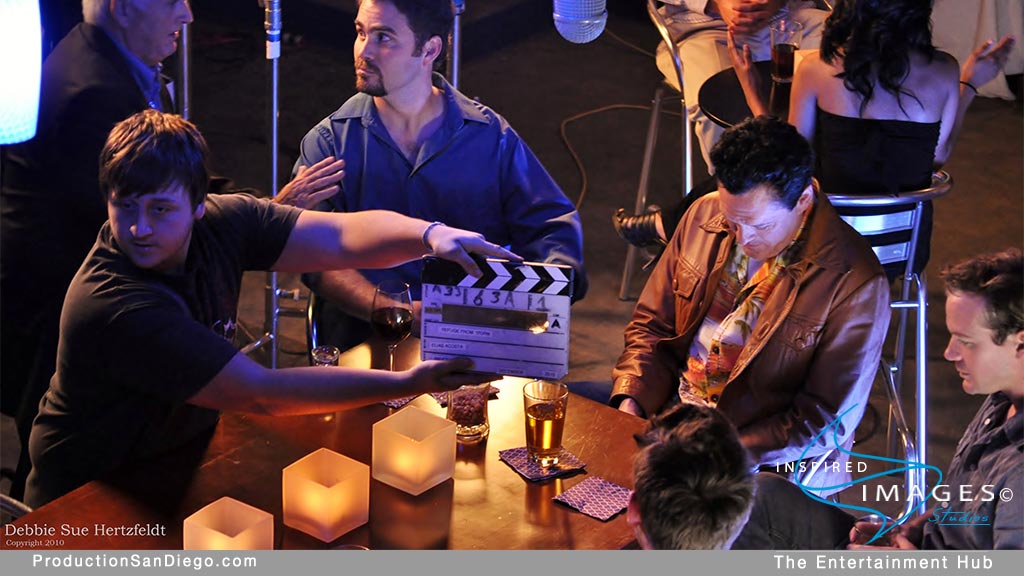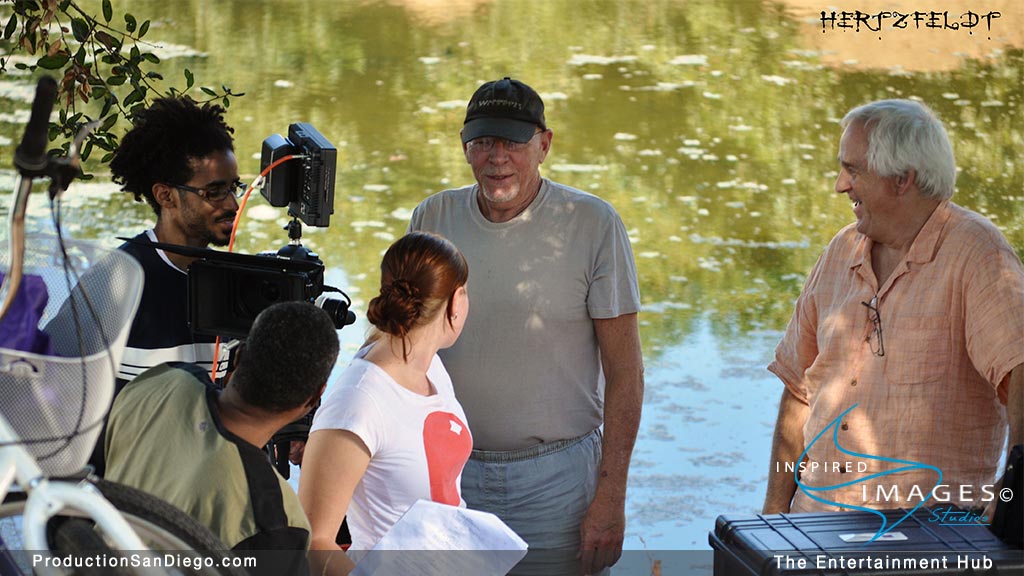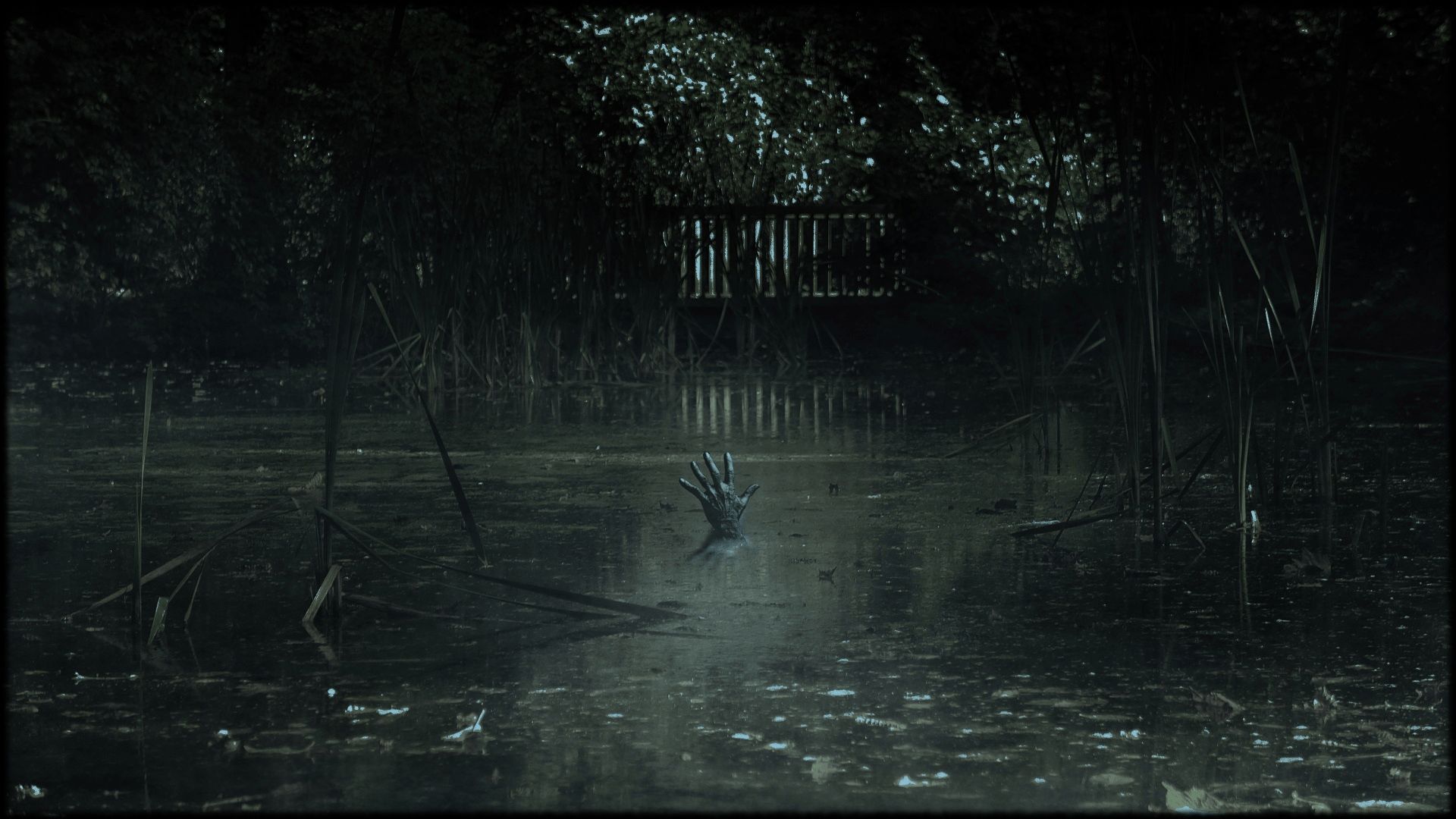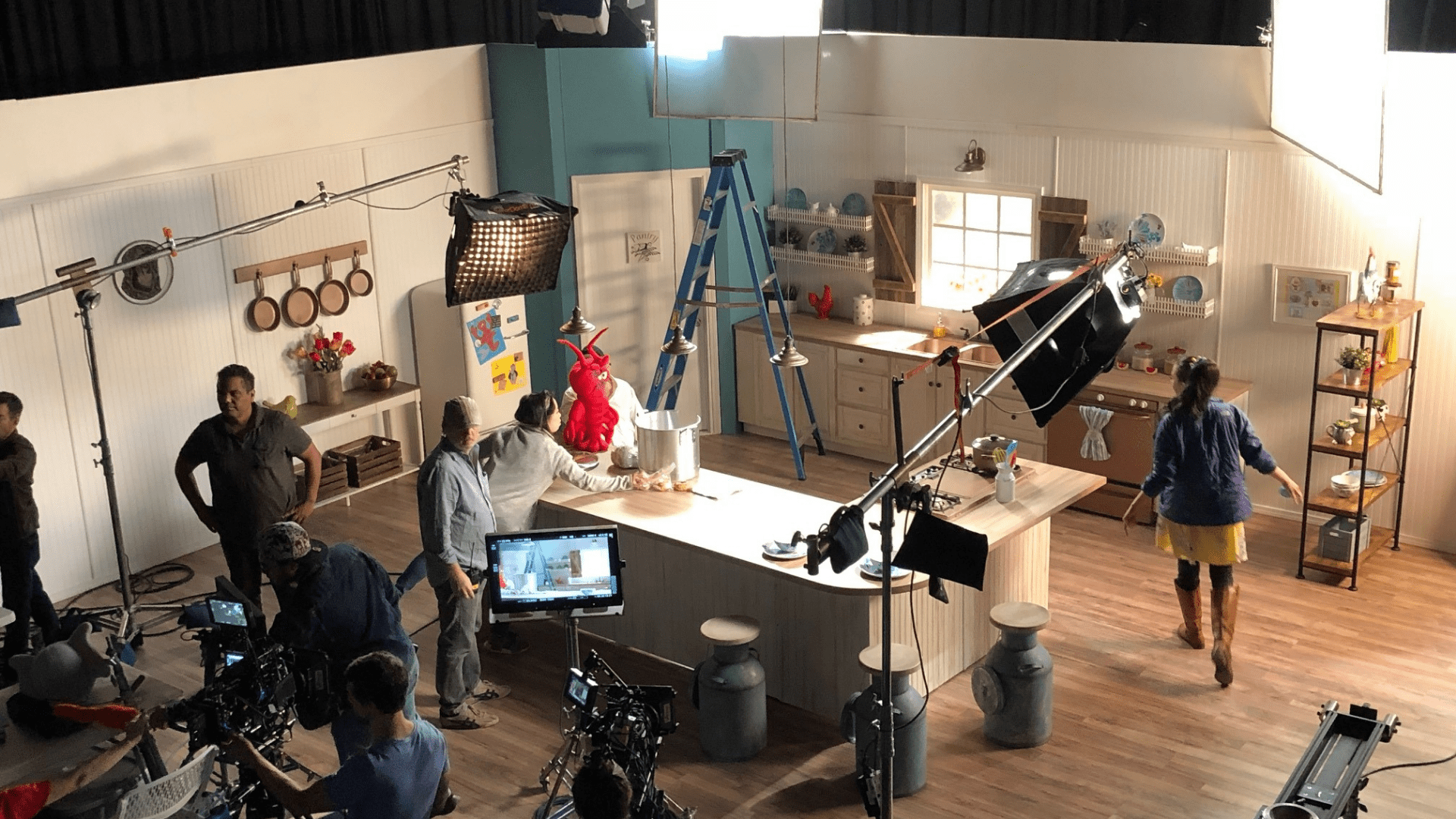Industry Insights is a podcast hosted by Jim Ellis and Elias Acosta. They invite industry professionals to share their knowledge and experience to help the next generation of filmmakers.
Jeff Deverett is a producer, director, consultant, and professor specializing in budgeting and film distribution. He is best known for films like Full Out 2, Kiss & Cry, and God Incorporated. In this interview, he shares his experience, knowledge, and know-how with listeners to give them a better understanding of budgeting for indie films.
Producing and distributing an indie film is no easy task. It requires a lot of hard work, dedication, and, most importantly – a successful budgeting plan.
Many aspiring filmmakers don’t realize the importance of budgeting until it’s too late. And even those who do understand the importance of budgeting can often find themselves struggling to stay within budget.
We have compiled his main points below to help with indie film budgeting for your first indie film. For the full interview, be sure to listen to the full episode.

Creating a budget for your independent film
The first thing an independent filmmaker should do is take their script and break it down – scene by scene – to better understand what they’re working with.
From there, you can start to estimate the costs of each scene, which includes the location, props, equipment, set design, and anything else needed to make the scene come to life.
Once each scene is broken down and accounted for, you must create a proper schedule for your film, as not every scene is shot in order.
Every day spent shooting is going to cost a lot of money. Therefore it is essential to be as efficient as possible with your independent film.
There are two types of budgeting
Above-the-line budgeting
Above-the-line budgeting includes fees for the director, the scriptwriter, A-list actors, and the producer. Typically, you do not pay these professionals a daily rate; instead, you negotiate a flat fee that is agreed upon before production begins.
Below-the-line budgeting
Below-the-line budgeting is everything not included in the above-the-line budget. Primarily consists of locations, equipment rentals, cast and crew salaries, food, insurance, and post-production costs.
Breaking down below-the-line budgeting
Consider Above-the-line items as part of Section A, with Below-the-line items broken down in Section B (Production), Section C (Post-Production), and Section D (Miscellaneous).
Section B – Production Costs
Section B includes locations, equipment rentals, crew salaries, and craft services.
Actors are often the biggest category in your below-the-line budget as their pay can vary greatly. Consider the market you are shooting in and the experience of your actors when allocating money for actors. You must also consider availability and scheduling and ensure your film schedule is tight to avoid wasted shoot days, resulting in wasted money.
Every labor component must be broken up and given its own line in a detailed budget.
Crew members would be on separate lines. Cinematographers, DP’s, and sound engineers would also have their own lines. If done correctly and every component is accounted for, your budget should have hundreds of lines for just the crew.
You must also break down location fees, equipment costs and rentals, and catering.
Section C – Post-Production Costs
Section C includes post-production, distribution, and marketing.
Many new indie filmmakers often overlook post-production costs, resulting in money shortages when it comes time to edit their films.
Post-production can include sound design and mixing, color correction, visual effects, and music licensing, quickly adding up.
It is essential to factor in these costs when budgeting for your film as they are often vital to the final product.
Section D – Miscellaneous Costs
Section D is dedicated to anything that doesn’t fit into the other categories, typically your legal and accounting fees, such as budgeting for permits, insurance, and other incidentals that might come up during production.
Including a contingency plan in your budget
On a movie shoot, issues will come up out of your control. Setting aside a contingency budget will help you avoid going over budget if and when problems arise.
A good rule of thumb is to add a 10-15 % contingency to your budget to quickly and effectively solve any problems as they happen.
For example, if your indie film budget breakdown comes to $300,000, your contingency budget would be an additional $30,000 – $45,000 to cover potential accidents.
Unable to raise enough money for my indie film
Every indie film producer’s worst nightmare is struggling to raise the money necessary for their film as outlined by their budget. It’s a common problem and one that can be difficult to solve.
You failed to reach your goal, and you need more money! What do you do?
If you find yourself in this situation, the first step is to go back to your budget and find ways to cut back on costs. Let’s say your total budget was $345,000, but you only managed to raise $240,000. Can you shoot your film with that much money?
Go through the reverse process of how you crafted your budget, knowing that your available total is $240,000 instead of the $345,000 total you had originally concluded you would need. Starting from the bottom of your budget, work your way up, reallocating costs and resources to hit that new budget total.
Can you get away with spending half as much on catering or borrowing equipment instead of renting it? Are there crew members you can cut from the project? Can you shoot your film in 20 days instead of 23 days?
The worst-case scenario would be to cancel the project altogether.
Without compromising too much on your creative vision, look for ways to cut corners and costs.
“… You can raise less than half of what you really need. I mean, should you attempt to make that movie? Cause you might not be able to make the movie you really want to make, so it’s a decision.”

What is the proper budget for your film project?
Every film genre has a different budget range for what is considered an appropriate budget.
“Like there’s the whole low-budget horror thing, right? I mean, people can shoot low-budget horrors for $10,000. You know, mostly nobody goes over $250k on a low-budget horror.
Cause you don’t have to, all right. You can make a decent movie at that range.”
Spending beyond the expected budget for a horror movie can have dire consequences in that you may not be able to recoup the cost of the film. The horror genre is overly saturated, so you need to be mindful of budgeting an appropriate amount for your project.
You cannot expect to spend a million dollars on a horror movie and make a return on your investment because the market is already overly saturated with horror flicks.

The same can be said for the sports drama genre. If you spend over a million on your film, you will have difficulty getting your money back. Unless you bump up your budget to 5 million and add some A-list actors, you won’t be making back any money by shooting a sports drama film of over a million dollars. At that point, it is no longer a low-budget film but a full feature film.
Budget within your means and your genre. You can’t afford to overspend and not make any money back as an indie filmmaker, especially if you have investors and private funding.
Budgeting based on film genre
Consider a sports film. What are the components that make up a sports film?
You need a stadium, you need an audience, and of course, players for a game.
“These are scenes that sell your movie and make your movie entertaining. So you need production value to make a good movie and to make a good trailer.”
These are big production scenes that can cost a lot of money. There are also underlying costs and permits attached to these big production pieces that will increase your budget.
Therefore you may need to dial back on some of these scenes when writing a script for your film, as you may not have the money, or permission, to shoot what you have in mind.
A script editor can help pull back on some of the more grandiose elements of your film, and alternatives need to be considered for major set pieces.
How to be a successful indie filmmaker
“If you’re an indie filmmaker and you are going to be a producer, You need to know how to use a spreadsheet because spreadsheets are the major business tool and budgeting and scheduling and everything are all spreadsheet-based.”
You have to be good with a spreadsheet and know how to navigate budgeting and scheduling if you want to be a successful indie filmmaker.
All-important skills for a producer include knowing how the formulas work, how you ended up with a specific cost for a line item, and how you can use the budget to your advantage while shooting.
Having a complete understanding of the ins and out of your spreadsheets will give you greater control when drafting your budgets and help you account for unforeseen costs while shooting.
Financing an indie film is a risky venture
The core of your financial model is going to come from private investors.
And as an indie filmmaker, you will have a lot of trouble finding these types of people. They need to understand and see your vision and have confidence in your project through a clear business plan.
Your business plan is your budget. You need to have a clear and concise budget that outlines the financial risks and rewards to your potential investors.
Another source of money is crowdfunding. A common form of crowdfunding for indie filmmakers is donation/reward-based crowdfunding, in which a donor is given credit for your film or receives digital screeners. Indiegogo, Kickstarter, and Seed & Spark are the three primary crowdfunding platforms used for indie films.
The other form of crowdfunding is equity-based crowdfunding. The SCC recently made it accessible to small, non-accredited investors to invest in movies. Common equity-based platforms are Wefunder and StartEngine for smaller investors.
Tax credits and rebates are not financing
Different states have different tax laws and programs, which can benefit an indie filmmaker. Some states may provide tax credits if you spend a certain amount of money hiring local crews and shooting in the state.
Others provide rebates or a return of a percentage of the money you spend on qualified production expenses. But it’s important to note that these tax credits and rebates are not part of the financing.
It can take a few months to even a few years before you receive any of this money back. If you set out to shoot a film with tax credits accounted for as part of your budget, you’ll quickly run out of money as it is not immediately made available to you.
“So if you’re going to get, let’s say, a $200,000 tax credit, you’re going to need the $200,000 to make the movie, and then you’re going to get it back a year later. So I frankly treat those as revenue because of the timing of the money. So some people treat it as finance, and then they go, and they realize they’re going to run out of cash.”
Dedicate time researching the different incentives each state has and what qualifies and what doesn’t. This way, you can create a budget that reflects the actual cost of your film.

Conclusion
Budgeting is an essential part of being a successful indie filmmaker. You need to be able to navigate budgeting and scheduling, have a clear understanding of your spreadsheet, and be aware of the financial risks and rewards for your potential investors. In addition, research the different incentives each state has to create an accurate budget for your film.



